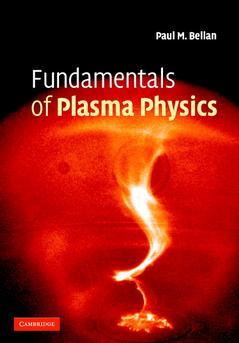Description
Fundamentals of Plasma Physics
Author: Bellan Paul M.
An advanced textbook covering essential and advanced topics in plasma physics relevant to many disciplines.
Language: English
Subject for Fundamentals of Plasma Physics:
Approximative price 93.24 €
Subject to availability at the publisher.
Add to cart
Publication date: 07-2008
628 p. · 17.5x24.6 cm · Paperback
628 p. · 17.5x24.6 cm · Paperback
Description
/li>Contents
/li>Biography
/li>
This rigorous explanation of plasmas is relevant to diverse plasma applications such as controlled fusion, astrophysical plasmas, solar physics, magnetospheric plasmas, and plasma thrusters. More thorough than previous texts, it exploits new powerful mathematical techniques to develop deeper insights into plasma behavior. After developing the basic plasma equations from first principles, the book explores single particle motion with particular attention to adiabatic invariance. The author then examines types of plasma waves and the issue of Landau damping. Magnetohydrodynamic equilibrium and stability are tackled with emphasis on the topological concepts of magnetic helicity and self-organization. Advanced topics follow, including magnetic reconnection, nonlinear waves, and the Fokker?Planck treatment of collisions. The book concludes by discussing unconventional plasmas such as non-neutral and dusty plasmas. Written for beginning graduate students and advanced undergraduates, this text emphasizes the fundamental principles that apply across many different contexts.
Preface; 1. Basic concepts; 2. The Vlasov, two-fluid, and MHD models of plasma dynamics; 3. Motion of a single plasma particle; 4. Elementary plasma waves; 5. Streaming instabilities and the Landau problem; 6. Cold plasma waves in a magnetized plasma; 7. Waves in inhomogeneous plasmas and wave energy relations; 8. Vlasov theory of warm electrostatic waves in a magnetized plasma; 9. MHD equilibria; 10. Stability of static MHD equilibria; 11. Magnetic helicity interpreted and Woltjer–Taylor relaxation; 12. Magnetic reconnection; 13. Fokker–Planck theory of collisions; 14. Wave-particle nonlinearities; 15. Wave-wave nonlinearities; 16. Non-neutral plasmas; 17. Dusty plasmas; Appendix A. Intuitive method for vector calculus identities; Appendix B. Vector calculus in orthogonal curvilinear coordinates; Appendix C. Frequently used physical constants and formulae; Bibliography; References; Index.
Paul M. Bellan is Professor of Applied Physics at the California Institute of Technology.
© 2024 LAVOISIER S.A.S.




